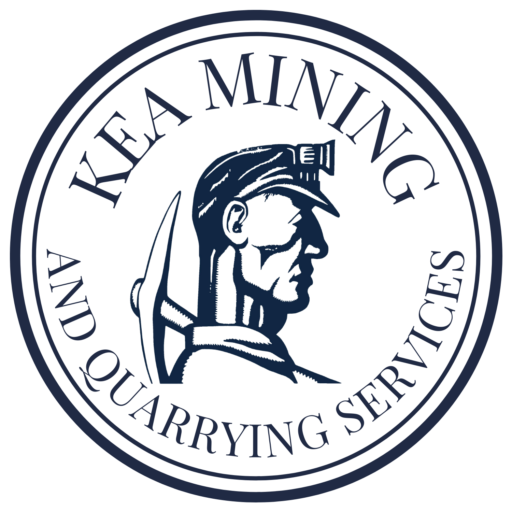Investing in Copper Mining in the Zambales Province of the Philippines
Copper is a metal that we often take for granted, but it plays a vital role in our modern world. It is a key component in numerous industries, including electronics, construction, and transportation. As we transition towards a low-carbon future, the demand for copper is only set to increase due to its use in electric vehicles, energy storage, and renewable energy infrastructure. In this context, the Zambales province of the Philippines presents a compelling investment opportunity for those interested in the copper mining sector. With abundant copper resources, supportive government policies, and growing global demand for copper, the region offers significant potential for investors willing to navigate the associated risks.
Introduction
The Zambales province, located in the Central Luzon region of the Philippines, is known for its abundant mineral resources, including copper, nickel, and chromite. The region is home to several large-scale mining operations and small- to medium-sized enterprises that are beginning to explore the potential of the area’s untapped resources.
Investment Opportunity in the Zambales Province
Recent developments in the Philippine government’s policies have opened up opportunities for foreign investors in the mining sector. With its vast copper reserves, the Zambales province presents a promising landscape for investors seeking exposure to the copper mining industry.
The long-term prospects for investment in Philippine mining operations appear to be promising, considering the country’s abundant mineral resources and the increasing global demand for minerals such as copper.
The Philippines is rich in mineral resources, including gold, copper, nickel, and chromite, as well as non-metallic minerals like limestone and marble [1, 4]. According to the Philippine Statistics Authority (PSA), the country’s mineral reserves continue to be inventoried annually, indicating that new opportunities may arise in the future [1].
The growing role of minerals and metals in a low-carbon future, particularly copper, makes the Philippines an attractive investment destination [3]. As the world transitions to renewable energy sources, the demand for copper is expected to increase significantly due to its use in electric vehicles, energy storage, and renewable energy infrastructure [12, 13]. The global copper shortage could last until 2030, which may lead to higher copper prices and present investment opportunities in the Philippine mining sector [12, 16].
However, investors must also consider the challenges and risks associated with the Philippine mining industry. Some of the problems include regulatory uncertainty, environmental concerns, and social issues surrounding mining operations [8]. The Philippine Department of Environment and Natural Resources (DENR) has implemented policies and programs to address these issues [7], but investors should remain aware of potential changes in regulations and their impact on mining operations.
In conclusion, the long-term prospects for investment in Philippine mining operations seem promising, especially given the increasing global demand for minerals like copper. However, investors should carefully evaluate the risks and challenges associated with the mining industry in the Philippines before making any investment decisions.
Technical Aspects of Copper Ore Mining
Copper ore mining typically involves the extraction of the mineral from the earth’s crust through a combination of surface and underground mining methods. The choice of method depends on factors such as the depth and grade of the copper deposit, as well as the economic feasibility of the mining operation. The process includes the following:
- Exploration: The initial stage involves identifying and assessing potential copper deposits through geological surveys, geochemical sampling, and geophysical studies.
- Development: Once a deposit is confirmed, infrastructure is built to support mining operations, including roads, power and water supply systems, and processing facilities.
- Extraction: This stage involves the removal of the copper ore from the ground using either open-pit or underground mining techniques. Open-pit mining involves excavating the overburden (the soil and rock above the ore deposit) and extracting the ore from the resulting pit. Underground mining is used when the deposit is too deep, or the ore grade is too low for open-pit mining, and it involves constructing tunnels and shafts to access the ore body.
- Processing: The extracted copper ore is then processed to separate the valuable copper minerals from the surrounding waste rock. This typically involves crushing, grinding, and flotation processes to produce a copper concentrate.
- Refining: The copper concentrate is then smelted and refined to produce pure copper metal, which is then sold to manufacturers for various applications.
International Trade Insights
Copper is a widely traded commodity on the global market, with major producers such as Chile, Peru, and China leading the supply. The Philippines, as an emerging copper producer, has the potential to become a significant player in the international market.
The primary drivers of copper demand include the construction and electrical sectors and the growing renewable energy and electric vehicle industries. The ongoing global transition towards clean energy and decarbonization has led to increased demand for copper in the production of solar panels, wind turbines, and electric vehicles.
Recent Developments
In recent years, the Philippine government has been actively promoting investments in the mining sector by implementing regulatory reforms and providing incentives for both local and foreign investors. This has led to increased exploration and development activities in the Zambales province, with several new copper mining projects announced and in progress.
Risks and Potential Rewards
Investing in copper mining in the Zambales province carries inherent risks that investors must consider before making any decisions. These risks include geological uncertainties, regulatory and environmental concerns, fluctuations in global copper prices, and potential opposition from local communities.
Geological uncertainties refer to the unpredictability of the copper deposit’s size, quality, and accessibility. Copper deposits may be more challenging to extract than expected due to geological complexities, which can impact the feasibility and profitability of mining projects.
Regulatory and environmental concerns are also significant risks for investors. The Philippine mining industry is subject to numerous regulations and policies, which can be subject to changes that can impact mining operations. Environmental concerns such as soil degradation, water contamination, and deforestation associated with mining operations can lead to negative public perceptions and potential opposition from local communities.
Fluctuations in global copper prices can also impact the profitability of mining operations. Copper prices are subject to market conditions and can be volatile, leading to potential financial losses for investors.
Lastly, potential opposition from local communities and infrastructure challenges could also impact the success of mining projects in the region. In recent years, there has been increased awareness and activism around mining projects, particularly in communities where the projects are situated. Investors must navigate this risk and ensure that they engage with local stakeholders in a respectful and mutually beneficial manner.
Conclusion
While there are significant risks involved with investing in copper mining in the Zambales province, the potential rewards are significant. Investors must conduct thorough due diligence, engage with local stakeholders, and monitor industry developments closely to capitalize on the growing opportunities in the copper mining industry in the region.
The Zambales province of the Philippines presents a promising investment opportunity for those interested in the copper mining sector. With abundant copper resources, supportive government policies, and growing global demand for copper, the region offers significant potential for investors willing to navigate the associated risks.
To maximize the potential for success, investors should conduct thorough due diligence, engage with local stakeholders, and monitor industry developments closely. By doing so, they can capitalize on the growing opportunities in the copper mining industry in the Zambales province and contribute to the region’s sustainable development.
Citations:
- Philippine Statistics Authority (PSA). (Various years). Annual Mineral Resources and Reserves Inventory.” URL
- U.S. Geological Survey (USGS). (Various years). Mineral Commodity Summaries. URL
- World Bank. (Various years). The Growing Role of Minerals and Metals for a Low Carbon Future. URL
- Invest Philippines. (Various years). Mining Sector Background and Potential. URL
- International Copper Study Group (ICSG). (Various years). Copper Market Forecast. URL
- Fitch Solutions. (Various years). Philippines Mining Report. URL
- Philippine Department of Environment and Natural Resources (DENR). (Various years). Policies and Programs on Mining. URL
- Tujan, A.A., & Guzman, R.C. (2018). Mining in the Philippines: Problems and Suggested Solutions. Journal of Southeast Asian Studies, 18(2), 1-22.
- Deloitte. (Various years). Tracking the Trends: Annual Reports on the Top Mining Industry Issues. URL
- Natural Resources Governance Institute (NRGI). (Various years). The Mining Industry in the Philippines: Governance, Policies, and Fiscal Regime. URL
- Gordon Brothers. (n.d.). Commercial and Industrial Copper.” URL
- CNBC. (2023, February 7). There isn’t enough copper in the world. Shortage could last until 2030. URL
- International Energy Agency. (n.d.). Total copper demand by sector and scenario, 2020-2040. URL
- Investing News Network. (n.d.). Copper Forecast. URL
- The Balance. (n.d.). US Economic Outlook.” URL
- Seeking Alpha. (n.d.). Copper: Looming Supply Shortfall To Support Strong Prices Over The Long Term. URL
- CNBC. (2023, February 13). Analysts see short-term strength, long-term ‘generational shift’ in copper prices. URL
- Capital.com. (n.d.). Copper Price Forecast. URL
- Knoema. (2021, May 23). Copper Price Forecast: 2021, 2022, and Long Term to 2035. URL
- Investing News Network. (n.d.). Copper Supply: Short Term vs. Long Term. URL



